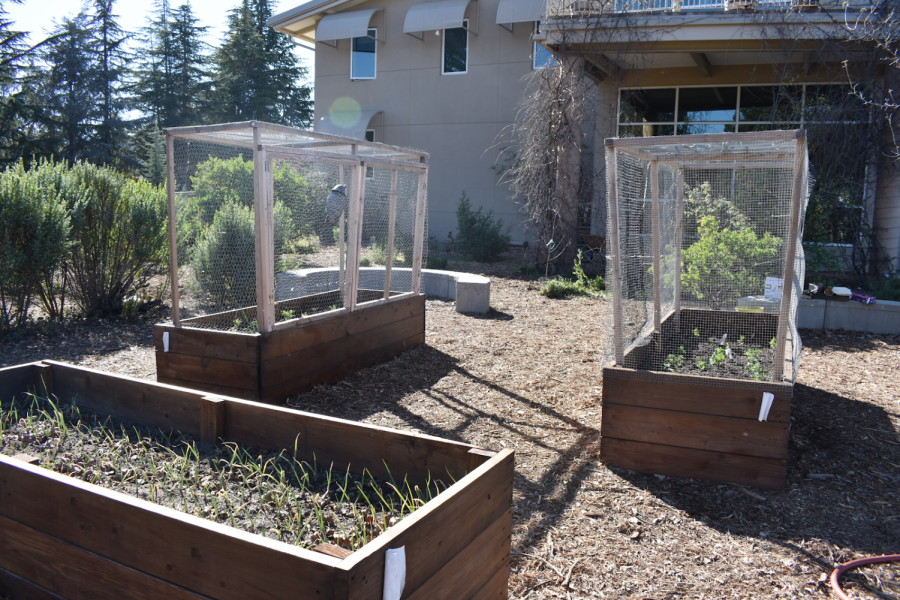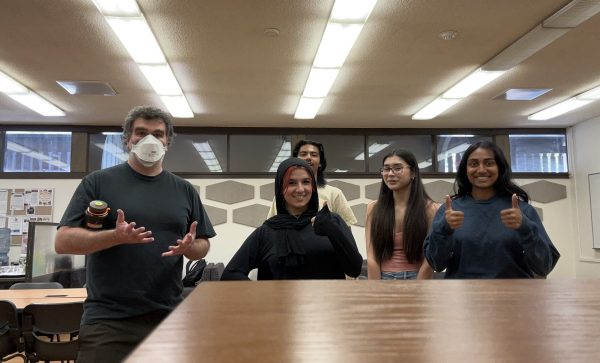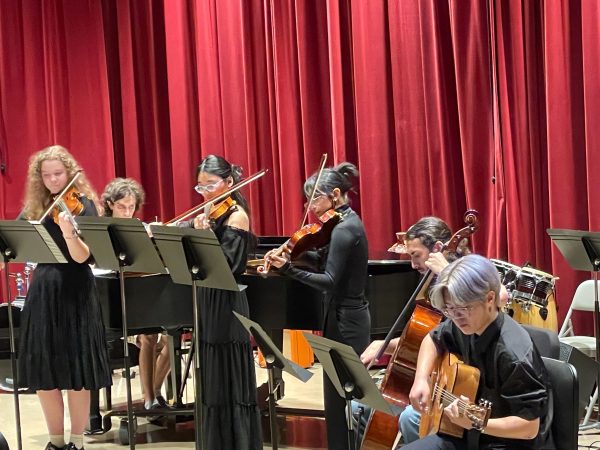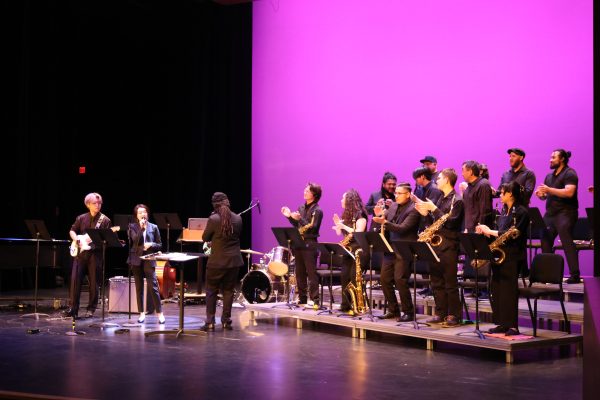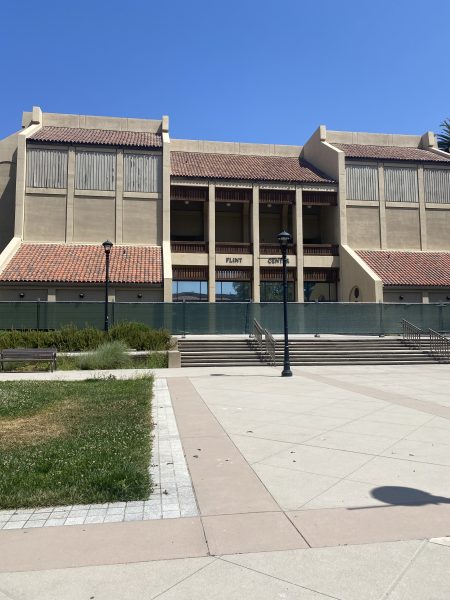From Kirsch to kitchen, students sow sustainable crops
More stories from Ana Acosta
Front: A raised bed containing spring onions for the cafeteria. Back: Two raised beds containing a variety of foods such as kale, butter lettuce, strawberries, tomato, peas, mint, snow peas, etc.
If you ate at the pho, flatbread or salad bars at the cafeteria this fall quarter, there is a chance that your food was topped with fresh spring onions and basil grown on campus by students.
Hidden behind the baseball fields of De Anza lies the Kirsch Community Garden, where students experiment with growing herbs, vegetables, greens and various fruit trees.
The spring onions were planted over the summer and yielded two harvests between September and December, lasting the cafeteria about three days each.
“The thing I think that’s important to learn is that a lot of energy goes into the production of our food and the serving of our food too,” said Alicia De Toro, Environmental Science Department Chair and instructor. “So I think it helps to bring consciousness to that when students realize like ‘I’ve been growing this plant all quarter, there’s no way I can get a meal from this.’”
The garden is a collaboration between Diana Martinez, Cheeseman ESA Coordinator and Environmental Studies Instructor, and Patrick Gannon, director of De Anza Dining Services.
“He [Gannon] takes the bottom of the green onions and he brings them to us and we just plant them,” said Mehran Karimi, environmental studies major and Kirsch Center employee. “And the good thing about it is you just cut the upper part, the bottom stays and grows right back.”
De Toro and Martinez both incorporate working at the garden into their classes, one of which is Humans, the Environment, and Sustainability (ES2).
“It gets the classes to work with the food service so there’s actually true meaning and a complete recycle,” Gannon said. “So when I bring in the onions, they actually grow them, they harvest them, clean them, bring them back to me, we chop them up and we feed them back to the students. Like a perfect circle.”
Produce that isn’t sent to the cafeteria is placed in a small kitchen at the Kirsch Center for students to take for free.
“I eat at the cafeteria like twice a week, three times a week. Me and Alicia- we always go there,” Karimi said. “We stop by the pho station here and there and yeah we’ve tried it and it’s a really good feeling. You know you grew it and you delivered it right there…it’s awesome.”
Gannon said the campus-grown spring onions taste more pungent and “alive from the garden” than the alternative.
De Toro said a class just planted different kinds of kale, lettuce, mint, peas, herbs and berries to see what they can provide for the cafeteria in the future.
Plans for the future include building new beds and planting lime trees to supply the pho station, Karimi and Gannon said.
“Learning should be fun,” De Toro said. “I believe in experiential learning and I think when people have a relationship with the information then they’ll be more likely to remember it.”



